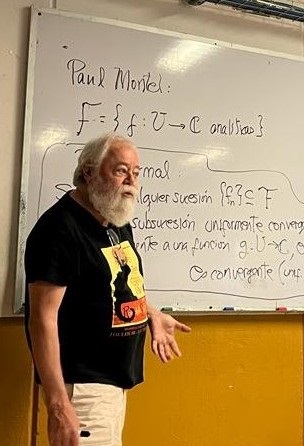
Jefferson Edwin King Dávalos
Universidad Nacional Autónoma de México, México
Abstract: In 1917, Pierre Fatou and Gaston Julia announced, independently of each other, being works on the iteration of functions of complex variables in the Comptes Rendus of the French Academy of Sciences. These works essentially constitute the foundations of the contemporary study of discrete dynamical systems of functions of a complex variable.
Among others, one of the surprising facts that emerged in the research of P. Fatou and G. Julia, was the appearance of curves and sets, at the time considered as something exceptional and not worthy of being taken seriously. For example, totally disconnected perfect sets –that is, Cantor sets– or continuous curves derivable at any point.
In fact, according to D.S. Alexander's book A History of Complex Dynamics, many French mathematicians (of the time) were disturbed by the existence of such things as curves without tangents and not only considered them unnatural, but sometimes even sought to ridicule those who studied such objects (free translation). However, it was Fatou and Julia themselves who were responsible for refuting these points of views, showing that such objects appeared most naturally and frequently as boundaries of sets with certain dynamic properties and in a multitude of diverse dynamic phenomena.
In this talk, we will briefly review some aspects of complex-variable dynamical systems to illustrate how these unnatural objects occur frequently.
Today, it is possible to show the powerful visual appeal of the objects we are about to see, thanks to the advent and development, over the last 40 years, of computers and computing techniques. Of course, Fatou and Julia did not have even remotely similar resources. Even so, they established the rigorous foundations of the theory of holomorphic dynamical systems. It is amazing that, seeing so little of these objects, they were able to see so far.
Semblance: Dr. Jefferson King has over 50 years of teaching experience, during which hundreds of students have passed through his classrooms. He has a special fascination for teaching Differential and Integral Calculus, mandatory course in the degrees of Mathematics, Physics and Actuarial Science. As of the 90's the fascination with Calculus was joined by an interest in research and teaching of courses in the topic of Discrete Dynamical Systems (SDD).
Currently, together with the professors Guillermo Sienra Loera, Renato Leriche Vázquez, Rodrigo Montero and Marco Antonio Montes de Oca, actively promotes a (permanent) Seminar on Holomorphic Discrete Dynamical Systems (SDDH). This research and teaching seminar is intended for researchers, professors, graduate and undergraduate students in the area of SDDH.
He has participated in many conferences in the country and abroad, given talks, supervised undergraduate and master's theses, and as a member of tutorial committees for doctoral students. In addition, he has also authored several articles in the area of SDD, and together with Dr. Héctor Mendez Lango, is the author of the book Sistemas Dinámicos Discretos published by the Faculty of Sciences, UNAM.